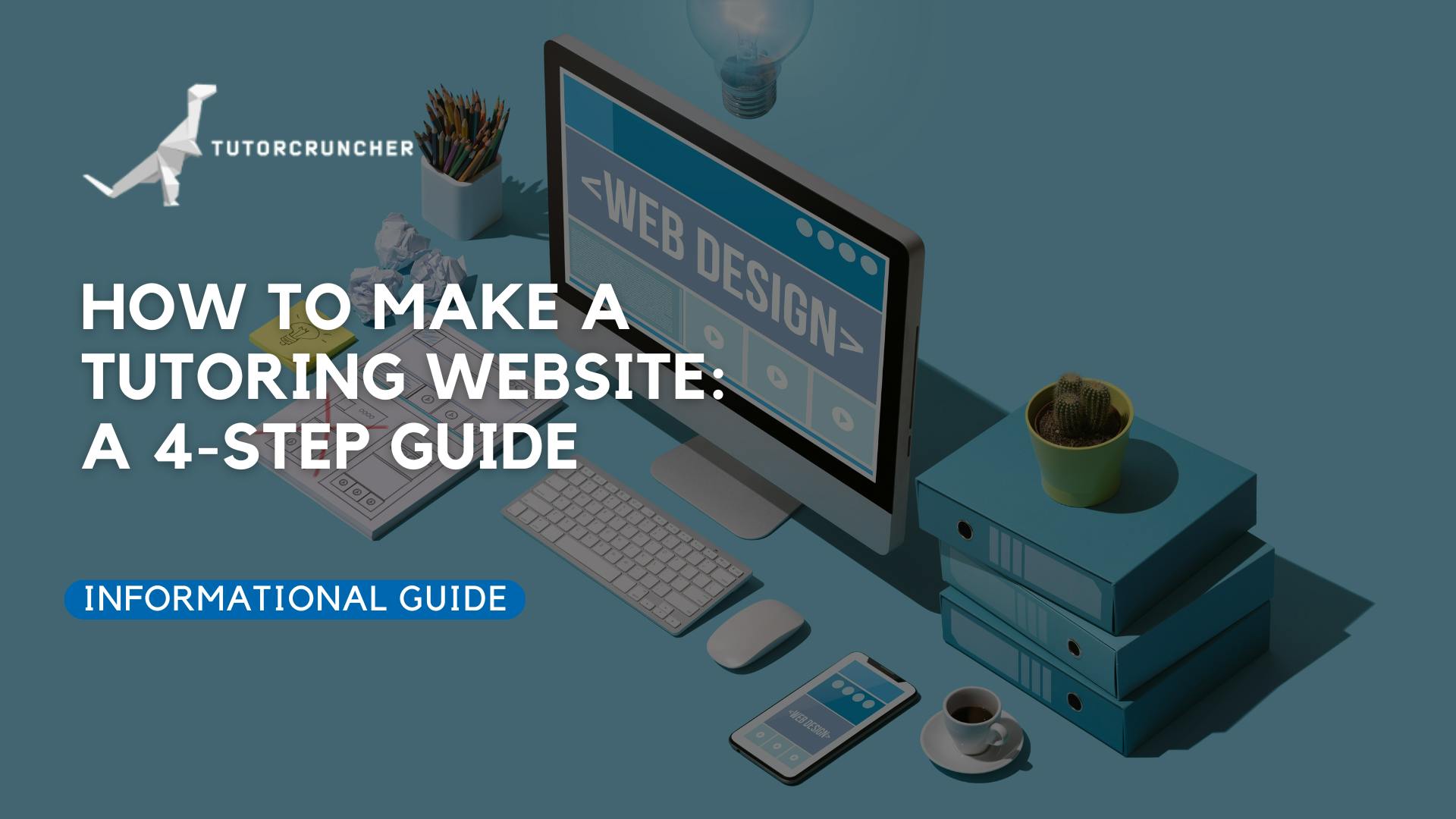
Creating a tutoring website can help you reach more students and share your teaching skills online. Whether you're offering math lessons, language tutoring, or homework help, an effective site can give you a professional edge and attract potential clients. With interactive tools and qualified teachers showcased on your site, you can provide a more engaging experience for students.
Building a professional website doesn’t have to be difficult. You can use a website builder to design a user-friendly site without needing advanced web development skills. This allows you to focus on delivering high-quality tutoring sessions and maintaining a strong online presence. Including sections for tutor profiles, client reviews, and a booking system can help make your site more appealing to new clients.
Consider what makes your tutoring services stand out. Highlight your teaching experience and the unique features of your online platform, like virtual classrooms or educational games. A well-designed tutor website not only supports your current tutoring business but also opens the door to new opportunities in online learning.
1. Establishing Your Online Tutoring Presence

Creating a strong online presence for your tutoring business involves careful planning and decision-making. Choosing the right domain name, a reliable hosting provider, and an effective content management system are key steps in reaching potential clients and building brand awareness.
Choosing a Domain Name
Your domain name is like your online address, so it should be easy to remember and reflect your tutoring services. Try to pick a name that includes relevant keywords, such as "tutoring" or "education" to help with search engine visibility. Alternatively, you could use a business name generator to assist you pick a suitable name.
Aim for something short and simple. Avoid numbers and hyphens since they might confuse users or make it hard to spell. Tools like Namecheap or GoDaddy can help you check if your desired domain is available. Consider registering similar variations of your domain name to protect your brand and avoid competitors using them.
Selecting a Website Hosting Provider
Selecting the right hosting provider is crucial for ensuring your website runs smoothly. Options include shared servers, virtual private servers, and dedicated servers. A shared server is a budget-friendly choice, though it may face slowdowns if traffic is high. A virtual private server offers more control and better performance. A dedicated server is more expensive but provides the best security and speed.
Research website hosting companies like Bluehost, SiteGround, or HostGator to compare costs, server security features, and customer service. Make sure your hosting choice supports the growth of your tutoring platform, especially if you plan to expand with interactive tools and virtual classrooms.
Deciding on a Content Management System
A content management system (CMS) helps you manage your website’s content with ease, offering tools to publish and update without needing to know how to code. Popular options include WordPress, Wix, and Squarespace.
WordPress is highly customizable with numerous plugins, making it ideal if you need advanced features. Wix and Squarespace have user-friendly drag-and-drop tools, perfect for those who want to save time on design elements.
Choose a CMS that aligns with your website goals, budget, and technical skills. Integrating educational games and course materials can also enhance your online tutoring platform.
2. Designing the Tutoring Website

When you create a tutoring website, it involves designing a homepage that grabs attention, ensuring navigation is simple, and crafting content that engages visitors. Focus on visual appeal and content clarity to make your site user-friendly and practical.
Crafting a Captivating Homepage
Your homepage is the first impression visitors have of your online tutoring platform. Use a clean design with a strong logo and a catchy hero image to draw attention. Clearly display what tutoring services you offer, including online classes, test preparation, and homework help.
Incorporate a call to action that invites potential clients to explore more, such as "Learn More" or "Contact Us Today." Your homepage should be inviting and reflect your brand identity, making it easy for users to connect with you.
Ensuring Easy Navigation
A well-organized navigation menu is key to improving the user experience on your tutoring website. Keep categories clearly labeled and avoid clutter to help users find tutoring services, tutors' profiles, and contact information quickly.
Consider using a simple, horizontal menu at the top of the page to guide visitors. Providing easy access to important sections, like the "About" section and client reviews, helps users make informed decisions. The layout should make it easy for users to book lessons or contact your tutoring business with ease.
Creating Engaging Content
Content is at the heart of any successful tutoring website. Your site should include engaging course materials, descriptions of tutoring sessions, and updates on online tutoring opportunities. Sharing fresh content, like blog posts or educational resources, can enhance your search engine visibility.
Offer all the essential information about your tutoring services and the benefits of choosing your online classes. Use clear, concise language to describe your certified tutors and tailored guidance. Encourage interaction by showcasing testimonials and enabling students to leave feedback, which builds trust and credibility.
3. Key Website Features for Tutoring

Creating a tutoring website involves several important features. These ensure that the site is useful and appealing to both new and regular users.
Integrating Tutor Management Software
Incorporating tutor management software can streamline your online tutoring business. It helps manage tutor profiles, schedules, and student interactions efficiently. With this software, you can track and organize tutoring sessions, which saves time and reduces errors.
A user-friendly interface also allows tutors and students to book lessons and view availability easily. It also supports features like an integrated calendar and automated reminders, which enhance the learning experience by keeping everyone on the same page. This tool is key for maintaining a professional and organized tutoring service.
Establishing a Pricing Page
A clear pricing page is vital for converting leads into paying customers. It should detail various packages and payment options that match the needs of different students. By offering detailed information, you help prospective clients make informed decisions.
Include a table to compare features and prices of your tutoring services. Display contact information clearly so users can reach out with questions. Pricing transparency builds trust and encourages potential customers to proceed with confidence. Ensuring that your pricing structure is straightforward can significantly impact your success.
Adding Testimonials and Reviews
Testimonials and reviews are powerful tools for building trust with potential clients for online businesses. They provide real insights into the experiences of other students and parents. Positive reviews can highlight key strengths of your tutoring services, encourage more inquiries, and improve your website's credibility.
Include a section where users can easily submit their feedback. Make sure to display a variety of reviews to give a balanced view of your offerings. Encouraging satisfied clients to leave testimonials boosts your online reputation and enhances your website’s appeal to new clients, showcasing the value and effectiveness of your educational platform.
4. Marketing Your Tutoring Services

Another way of enhancing tutoring businesses is by effectively marketing your services. Focus on achieving visibility through search engines and offering membership options. These strategies can help you get new clients and create a steady revenue stream.
Optimizing for Google Searches
Improving your website's search visibility can greatly impact your tutoring business. To do this, use relevant keywords related to tutoring services and keep your content up-to-date. Incorporate phrases like "tutoring website," "online tutoring," and "online learning" naturally within your site content.
Make sure your website is fast and user-friendly. These factors are important for both search engine rankings and client satisfaction. You can also add a blog with helpful articles about tutoring, which can draw more visitors to your site.
Utilize tools like Google Analytics to monitor traffic and refine your SEO strategy over time. This data helps you adjust your content to better match what potential clients are searching for online, positioning you to generate quality leads.
Incorporating eCommerce for Memberships
Adding an eCommerce element to your tutoring website allows for membership options, offering regular value to your clients. Set up a secure payment gateway so customers can easily subscribe. This approach encourages a consistent monthly revenue.
Consider what you can offer to members, such as exclusive content, reduced rates for tutoring sessions, or early access to new online courses. Tailor these offerings to fit the needs of your audience.
Incorporating membership options not only boosts income but also helps maintain long-term customer relationships. It gives clients more reasons to stay connected with your services, fostering loyalty and ongoing engagement.
Contact Us to Try a 14-Day Free Trial of TutorCruncher Today

Start exploring TutorCruncher with a free 14-day trial. This gives you a chance to test functionalities like tutor management and lesson scheduling. Experience effortless setup and operation for your tutoring business.
If you’re interested, reach out at support@tutorcruncher.com or call 020 3966 1863. Gain insights and optimize your operations with ease. Start your online tutoring journey by contacting us today.



